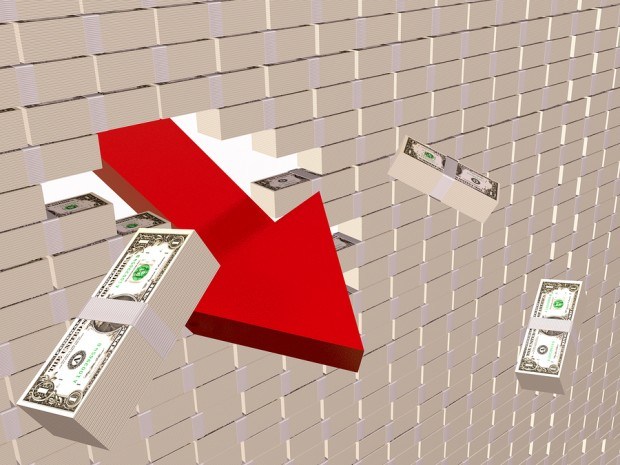The worst reinsurance market in memory looks set to carry into 2015, industry executives said.
An absence of costly disasters and increasing competition from new entrants dragged on prices this year, and reinsurers may struggle to halt the slide when they meet with brokers and clients in Monte Carlo this month to begin negotiating next year’s property-and-casualty policies.
“This soft market is probably in a universal way unmatched by previous cycles I’ve lived through,” said Manfred Seitz, managing director of international reinsurance at Warren Buffett’s Berkshire Hathaway Inc. and an industry veteran who started his career at Munich Re in 1972. “We have a deterioration of pricing over a longer period of time in practically all classes of business,” he said at a roundtable of reinsurance executives organized by Bloomberg News.
Prices dropped this year during each of the policy renewal periods in January, April and July, according to broker Guy Carpenter & Co., the seventh year in the past 10 that rates have slumped. The declines were “across virtually all geographies and lines of business, many in the double-digit range,” the New York-based firm said in a July report.
‘Shocking’ Trend
“The trend throughout 2014 was shocking — prices declined very rapidly,” Juergen Graeber, a management board member at Hannover Re, the world’s third-largest reinsurer, said at the Bloomberg roundtable. “We don’t have room to give. That’s why we cannot compromise on underwriting discipline.”
Record-low interest rates have lured new participants seeking higher investment returns to put up capital to back reinsurance risks. Hedge fund investors including John Paulson, Daniel Loeb and David Einhorn have established reinsurers to gain access to money that’s less subject to client withdrawals and to benefit from tax advantages in locations like Bermuda or the Cayman Islands. TIAA-CREF is among pension funds investing in insurance-linked securities such as catastrophe bonds.
While lower-than-average catastrophe claims cushioned reinsurers earnings in the first half, they also eroded their pricing power as buyers were less compelled to seek protection. Falling costs for reinsurance are putting pressure on primary insurers to reduce prices as they compete for business.
‘Kidding Ourselves’
“That capacity finds its way to the retail space and we are seeing this now in North America,” said Paul Horgan, who buys coverage as head of group reinsurance at Zurich Insurance Group AG. “In terms of the pricing, if there are no major events our anticipation is that it will continue to drift lower.”
Munich Re CEO Nikolaus von Bomhard said on Aug. 7 that alternative sources of capital may lead traditional reinsurers to take too many underwriting risks to win business. That could force the industry to make riskier investments to offset unprofitable underwriting, a strategy that led to losses more than a decade ago when the dot-com bubble burst.
“We are kidding ourselves that we can make good some of the shortfall on the underwriting by being more aggressive on the investment side,” Amer Ahmed, CEO of Allianz Re, the reinsurance arm of Allianz, said at the Bloomberg event. “It is burning the candle at both ends.”
Catastrophe Bonds
A.M. Best, Fitch Ratings and Standard & Poor’s have a negative outlook on the reinsurance industry on concern that shrinking margins and more favorable terms being offered to clients threaten to strain companies’ financial strength.
“My sense is absolute premiums will probably stay at similar levels,” Allianz’s Ahmed said, referring to his outlook for prices in 2015. “It’s getting to a point where people are trying to protect top lines. The rate deterioration will come in hidden terms and conditions where it’s less evident.”
Munich Re, Swiss Re and Hannover Re reported quarterly earnings last month that missed analysts’ estimates, even as claims from large catastrophes remained below their expectations. Munich Re shares fell 2.8 percent this year, while Swiss Re slid 7.6 percent. Hannover Re rose 2.3 percent, lagging the 4.8 percent advance in the 32-company Bloomberg Europe 500 Insurance Index.
Funds available to back reinsurance risks swelled to a record $555 billion at the end of March, according to Aon Benfield, the reinsurance brokerage unit of Aon Plc. It cited record capital levels at reinsurers and “continually building interest from alternative capital investors,” such as funds purchasing catastrophe bonds.
Cat bonds pay investors above-market yields to assume risks tied to a specific event, such as a hurricane or earthquake. If the disaster meets pre-defined conditions, investors may lose interest and principal.
‘Interesting Point’
“The market is at a very interesting point,” said Jonathan Isherwood, who’s in charge of managing relationships with large insurance clients as head of globals at Zurich-based Swiss Re. “Technically, people are still making some money, but flattered by reserve releases and low cat losses. Some perils are below technically adequate rates. There is pressure on pricing, but we see flattening occurring — we see signs of that for example in the insurance-linked securities market.”
Cat bond sales in the first half were the highest on record, exceeding the year-earlier period by almost 50 percent and bringing total outstanding bonds to a record $22.4 billion at the end of June, according to Aon Benfield. That pace slowed in the third quarter.
$100 Billion Event
Demand has diminished a bit recently, said Pascal Koller, fund manager and partner at LGT Insurance-Linked Strategies, which has about $3.9 billion in assets under management. Still, “we will probably see some more pressure on pricing” for reinsurance, “even if we do see an event in the remainder of the year,” he said.
To “meaningfully disrupt” the downward trend in prices, a catastrophe costing insurers more than $100 billion would be required, Aon Benfield estimated. That would be 1.6 times the insured losses from Hurricane Katrina, which devastated New Orleans in 2005.
Reinsurers may soon come to a point where they have eaten through claims buffers built up in earlier years, according to Hannover Re’s Graeber.
So far, profits have held up, “helped by prior-year reserve releases,” said Graeber, chief operating officer of non-life reinsurance operations. “We cannot assume to continue to do so as our promise to customers to pay requires us to have strong financials. We are at a point where it is still OK, but we can’t go further.”





















 Carrier Management’s 2025 Top Features (Reader’s Picks Unlocked)
Carrier Management’s 2025 Top Features (Reader’s Picks Unlocked)  Northern California Flooding This Weekend Caused by Heavy Rain, High Tides
Northern California Flooding This Weekend Caused by Heavy Rain, High Tides  Breaking: Andersen to Replace Zaffino as CEO of AIG on June 1
Breaking: Andersen to Replace Zaffino as CEO of AIG on June 1  NOAA Announces Latest AI-Driven Global Weather Models
NOAA Announces Latest AI-Driven Global Weather Models 
















